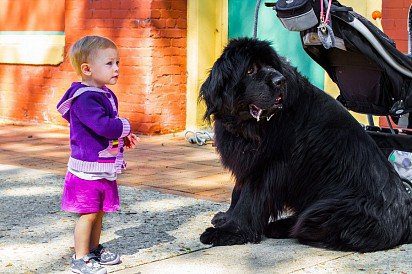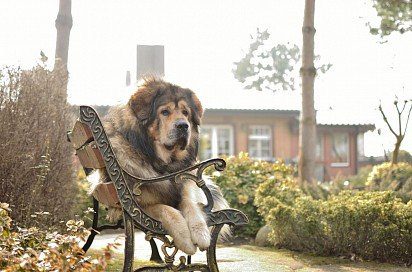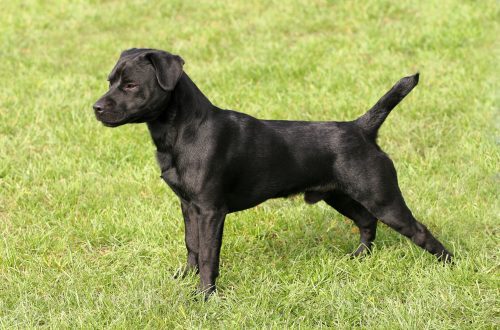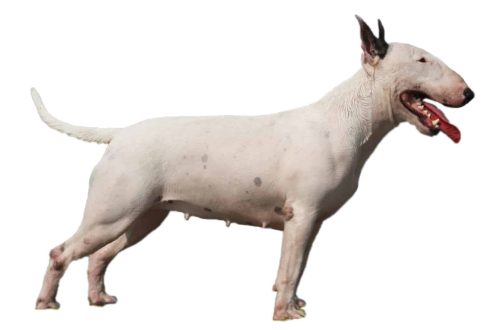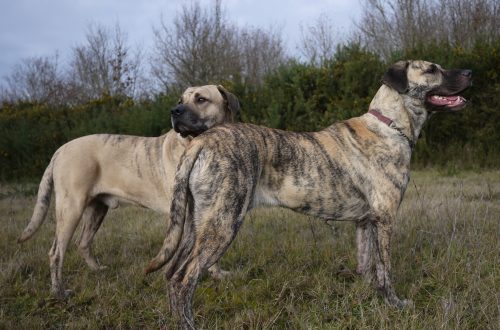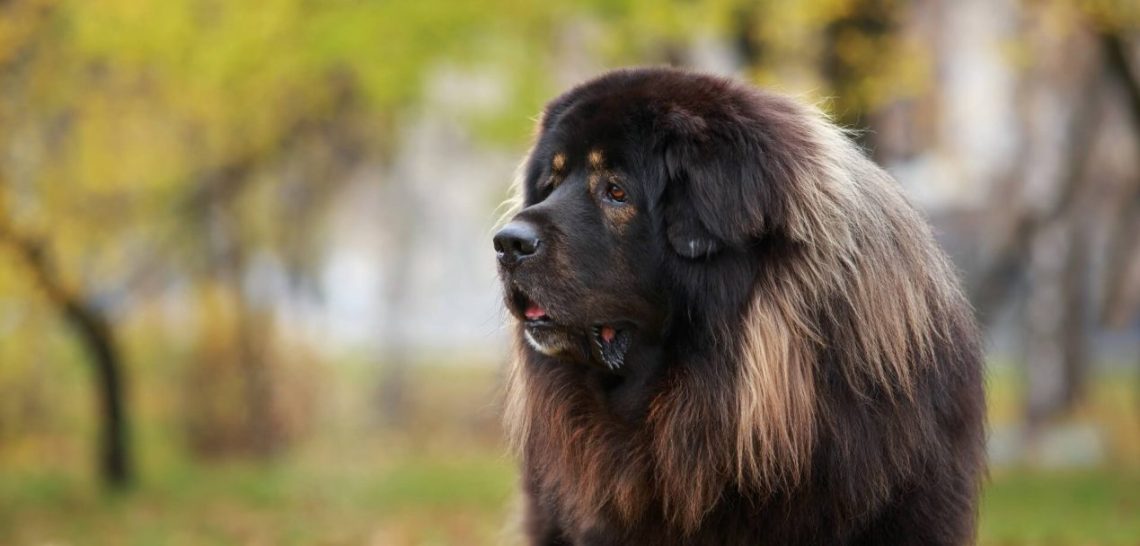
Tibetan Mastiff
The Tibetan Mastiff is a huge handsome man, which is notable for its powerful dimensions. However, his outward resemblance to the king of beasts does not in the least detract from his good nature.
Contents
- Characteristics of Tibetan Mastiff
- Basic moments
- History of the Tibetan Mastiff
- Video: Tibetan Mastiff
- Appearance of the Tibetan Mastiff
- Photo of a Tibetan Mastiff
- The nature of the Tibetan Mastiff
- Education and training
- Care and maintenance
- Health and disease of the Tibetan Mastiff
- How to choose a puppy
- Photo of Tibetan mastiff puppies
- How much does a Tibetan Mastiff cost?
Characteristics of Tibetan Mastiff
| Country of origin | |
| The size | |
| Growth | |
| Weight | |
| Age | |
| FCI breed group |
Basic moments
- This breed is not recommended for beginner dog breeders: it requires competent socialization and incredible patience.
- The impressive size of the Tibetan is not always combined with the usual apartments, so it is best to keep the dog in a private home.
- The peak of mastiff activity occurs in the evening or even at night: it is then that it is best to walk with your pet on the street.
- Tibetan mastiffs cannot keep on a chain, as they are very sociable and want to spend time with their master.
- These dogs are incredibly smart and independent, and in some cases will have to show strength of character.
- All Tibetans are owners of loud barking, so work hard to ensure that your dog does not make noise for no reason.
- Mastiffs need constant physical activity, otherwise they can get bored and literally turn your house into ruins.
- They do not like noisy companies, because they see them as a potential threat.
- They get along well with children and, under certain circumstances, animals.
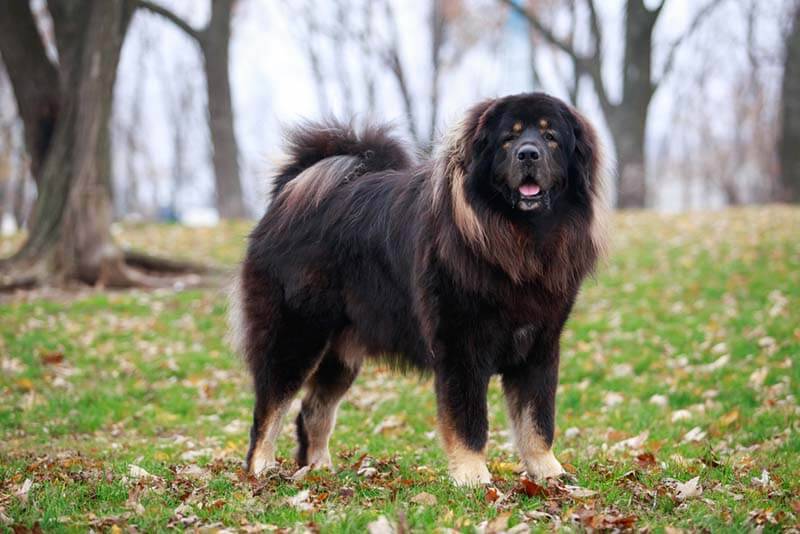
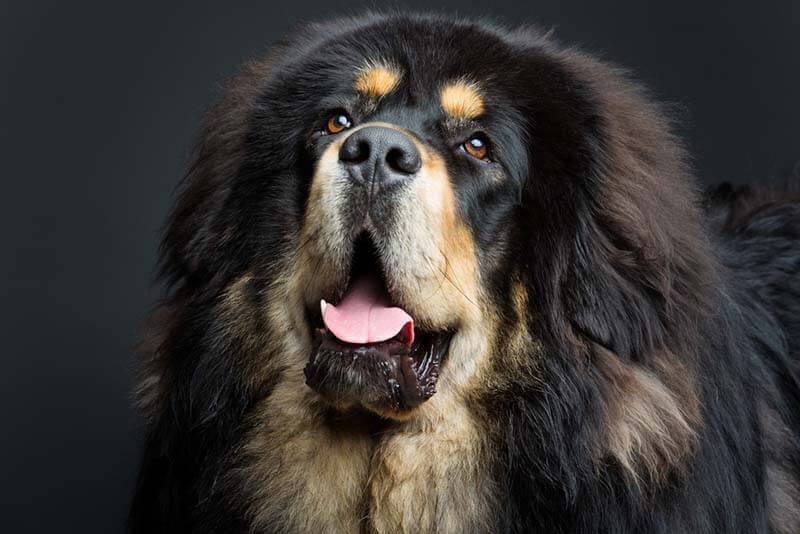
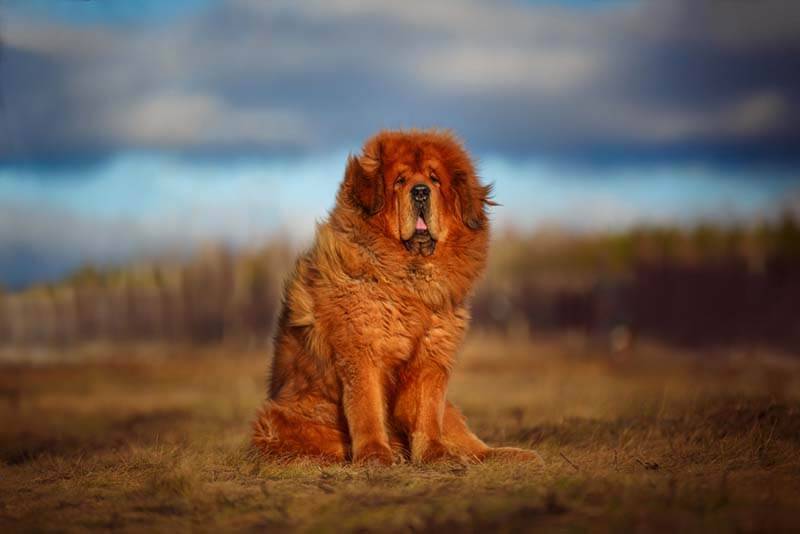
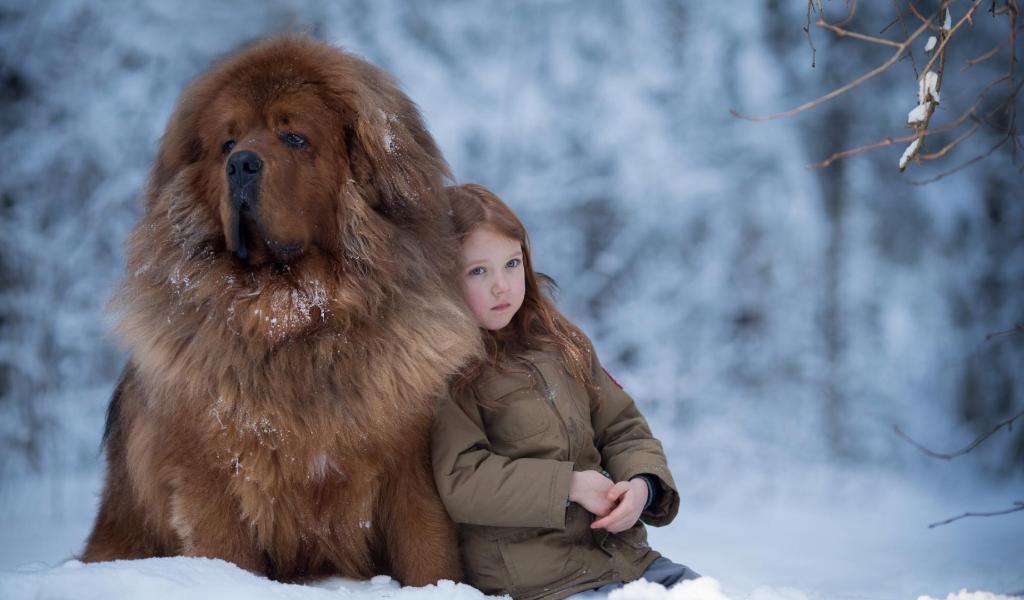
The Tibetan mastiff is rightfully considered the property of a mysterious corner of the globe – the “roof of the world” called Tibet. Representatives of this breed are reputed to be reliable and fearless defenders who are not devoid of self-esteem and independent character. Looking at the menacing appearance of the dog, it is difficult to assume that this breed is one of the most friendly and loyal. The centuries-old duo of man and mastiff taught the latter to show remarkable patience and understanding.
History of the Tibetan Mastiff
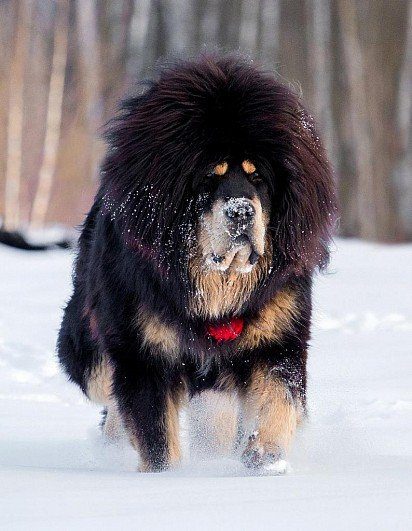
The history of the origin of the Tibetan mastiffs is shrouded in mystery, since the first dogs appeared long before the emergence of writing in certain regions of Tibet. The approximate age of the breed was determined only through a genetic study, initiated by employees of the China University of Molecular Evolution. Comparing the mitochondrial DNA of a wolf and a dog, scientists found that the first signs of their difference from each other appeared about 42 thousand years ago. A similar experiment with mastiff DNA showed a different result – 58 thousand years. This allows us to consider the breed one of the oldest in the world.
Archaeological finds – bones and skulls of animals – allow us to say that the ancestors of mastiffs walked side by side with people back in the Stone and Bronze Ages. As for the references to the breed in written sources, they date back to the first half of the 12th century. In 1121, the emperor of China received a luxurious gift – huge hunting dogs that look like mastiffs.
Tibet is considered the birthplace of the breed – a sacred place for the followers of the Buddha and his teachings. Due to their physical and intellectual strength, dogs have become indispensable companions in those harsh living conditions. Often the animals showed ferocity, which is why many owners kept the mastiffs locked up, releasing their paws only at night: mountain villages always needed enhanced protection.
Mastiffs were also widely used to protect the tranquility of the monasteries. Then the animals worked in the company of Tibetan spaniels. The latter raised unrestrained barking during the invasion of strangers and thus called for the help of mastiffs – heavier “artillery”. Given the fact that these large dogs fearlessly entered into battle even with snow leopards, the monks and novices could not be afraid of armed raids and invasions.
It was the geographical remoteness of Tibet that was the reason why the breed managed to maintain its original features for millennia. Only occasionally mastiffs “wandered” to other countries – mainly as trophies or valuable gifts. According to historical data, similar dogs accompanied the army of Genghis Khan in battles, and the rest of the time they carried guard duty. The distant ancestors of the mastiffs were also found in other armies of the ancient world who fought with the Romans, Greeks, Assyrians and Persians.
At the turn of the XIII-XIV centuries, Marco Polo, an Italian traveler and merchant, set foot on the lands of Tibet. In his writings, he mentions the mastiff – a huge and angry dog, which almost exceeded the size of a pack donkey. Her voice was loud and booming like a lion’s roar, and her eyes were filled with blood at the slightest hint of danger. Although, perhaps, the merchant only wrote down the observations of other travelers, which could embellish reality. By the way, many cynologists adhere to just such a point of view, although they admit that such a colorful description excites the imagination of impressionable persons.

For a long time, the whole world was content with only fragmentary stories of travelers about the powerful and majestic dogs of Tibet. The spread of the breed throughout Europe began in 1847, when the future Viceroy of India, Lord Harding, presented Queen Victoria with an unusual gift – a Tibetan Mastiff, which was later named Siring. In the second half of the 19th century, Edward VII returned to his homeland along with two representatives of the breed. Later they were shown at an exhibition in the London cultural and entertainment center Alexandra Palace.
These were the first glimpses of the West’s timid acquaintance with the Tibetan mastiffs, who had been in complete isolation from the outside world for several millennia. The amazing breed began to gain popularity in the circles of aristocrats, and mastiffs were increasingly brought to the territory of Great Britain, from where they later spread throughout Europe. This process took the next fifty years.
In 1931, interest in Mastiffs resulted in the founding of the Tibetan Dog Breeds Association. At the same time, the first breed standard was formulated. Its author was the wife of Lieutenant Colonel Frederick Bailey, who acquired four Tibetan mastiffs and returned with them to England. This standard was later taken as the basis by such cynological organizations as the FCI and the Kennel Club.
The beginning of the Second World War almost put an end to the spread of the breed around the globe. The flow of mastiffs, which were brought from Nepal and Tibet, temporarily stopped, and breeders had to make tremendous efforts to preserve the breed. It has not yet been established how the dogs ended up in the United States in 1950 as a gift to then-President Eisenhower. However, this gesture of goodwill was not received with enthusiasm, and the breed itself did not win the love of the Americans. Gradually, the mastiffs were sent to the ranch and forgotten for twenty years.
Since 1969, dogs have been brought back to the United States – this time straight from their historical homeland. Five years later, on the initiative of cynologists, the Association of the American Line of Tibetan Mastiffs (ATMA) was created. She also became the main club for lovers of the breed. In 1979, Mastiffs bred in the USA took part in the show for the first time and were a resounding success.
Today, the Tibetan Mastiff is one of the rare dog breeds. So, in the UK there are about three hundred purebred specimens. In the United States, Mastiffs are ranked 124 out of 167 existing breeds. In Russia, these dogs continue to gain popularity, but it is still not enough to open full-fledged kennels.
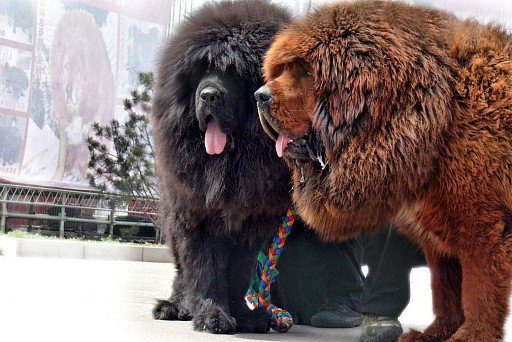

Video: Tibetan Mastiff
Appearance of the Tibetan Mastiff
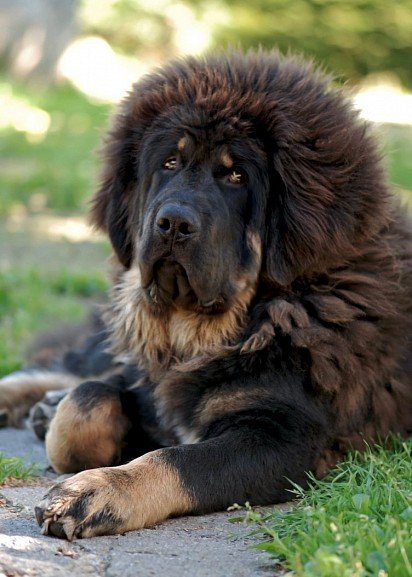
The Tibetan Mastiff is a large dog breed. This is a strong animal with heavy and strong bones. Despite its impressive size, the mastiff looks proportional.
The FCI standard suggests that the minimum height for a dog is 66 cm, while bitches usually grow to 61 cm or more. As for body weight, ideally it reaches 64-78 kg.
Head and skull
The head of the Tibetan mastiff is commensurate with its dimensions: it is very heavy and strong – in general, it perfectly matches the appearance of the dog. The rounded skull has a pronounced tubercle at the back of the head.
Muzzle
Mastiff – the owner of a very wide muzzle, which looks square in front. The transition to it from the forehead is well defined. A wide nose with large nostrils is distinguished by black or pigmentation as close as possible to it. Fleshy lips adhere to the lower jaw. In adult Tibetan Mastiffs, a fold on the side of the muzzle is acceptable.
Ears
Triangular ears are set above the eyes, but do not reach the line of the skull. The Mastiff’s ears are hanging and slightly drooping forward, but may rise if the dog is restless.
Eyes
Oval eyes set slightly obliquely and wide apart. They have a brown tint, and the richer it is, the better. The eyelids are tight.
Jaws and teeth
The jaws of the Tibetan Mastiff are quite strong. The upper incisors of the dog overlap the lower ones, thus forming a scissor bite (a straight bite is also allowed). Teeth “sit” vertically and tightly in relation to each other.
Neck
The muscular and strong neck of the dog has a pronounced scruff and a slight dewlap. Thick wool forms a mane. It is worth noting that it is less noticeable in females than in males.
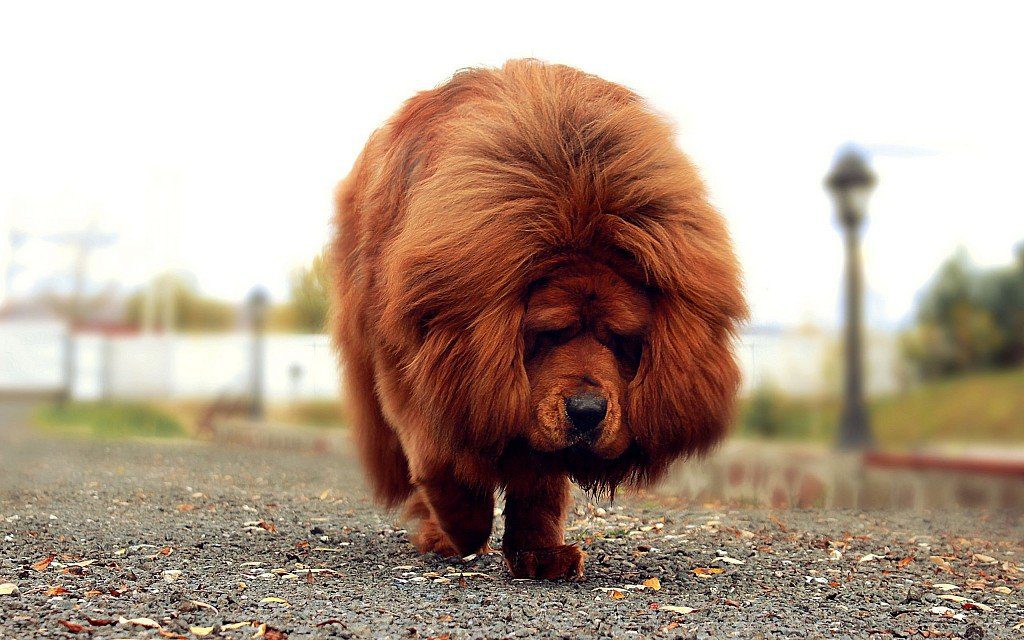
Frame
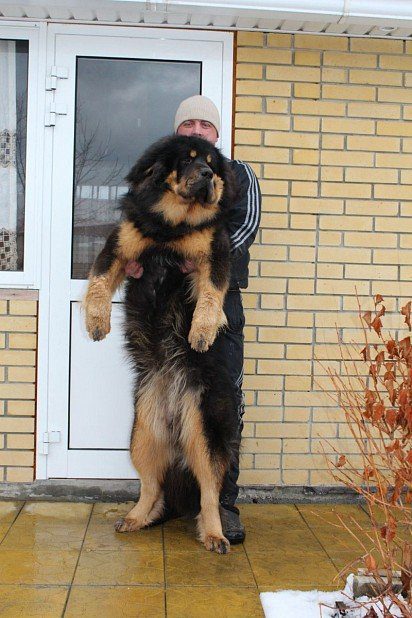
The Tibetan Mastiff has a strong body. The muscular back goes into a wide croup. The shape of the “heart” that the chest has is very remarkable. It is formed by the slightly rounded ribs of the dog. The lower part of the chest is below the level of the elbows.
Tail
The tail is of medium length and is set high enough. It is casually thrown on the back and raised during the movement of the mastiff or at the moment when the dog is alarmed by something. Covered with long and close fitting hair.
Forelimbs
They have strong bones and pronounced articulation angles. The muscular shoulders of the mastiff are well sloping and merge into straight forearms. Elbows point straight back. The breed standard does not allow them to turn outward or inward. The pasterns are set at a slight inclination. The forelimbs end in large and strong paws with curved toes.
Hind limbs
Parallel to each other, which is noticeable when viewed from behind the Tibetan Mastiff. The long thighs are quite muscular. The dog’s knees are well defined. Dewclaws are often removed at the request of the mastiff owner. The pigmentation of the paw pads is predominantly black or corresponds to the color of the animal.
Movement style
The movements of the Tibetan mastiff combine strength and lightness; distinguished by a confident push and removal of limbs. With accelerated walking, the dog shifts its legs to the conditional line in the center. In other cases, the animal moves slowly, demonstrating nobility.
wool cover
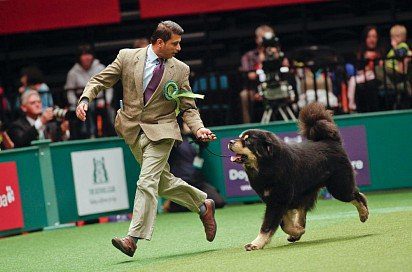
Under the hard and straight coat, a thick undercoat is hidden, which sheds in the warm season. A mane forms around the dog’s neck, which gently falls over the shoulders. Feathers are visible on the dorsal surface of the hind limbs.
Color
The breed standard calls for as pure shades as possible (regardless of the base color). Tan varies between light and deep chestnut. At the same time, it is located mainly above the eyes of the dog, on the lower part of the limbs and tail. The presence of “points” is acceptable. The same applies to the white spot on the chest, but on the paws this color should not be intense. The main colors of the mastiff include sable, golden (shades of any saturation are possible), blue (with or without points), black and tan and black.
Possible vices
Defects are considered the slightest deviations from the standard. Among them, the most common:
- smoothed or contoured corners of the limbs;
- large or very low set ears;
- rounded ribs (in the manner of a barrel);
- light color of the iris of the eyes and nose;
- loose lips;
- brightly outlined suspension;
- stiffness of movements;
- curled tail.
Disqualifying faults include:
- color different from the standard;
- cowardly or aggressive behavior;
- overshot or undershot jaws;
- undescended testicles.
Photo of a Tibetan Mastiff
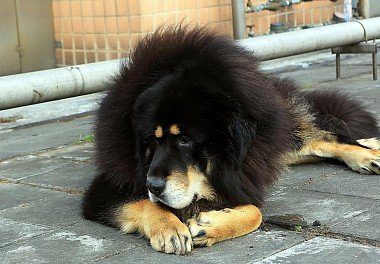
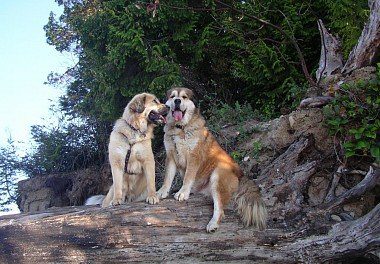
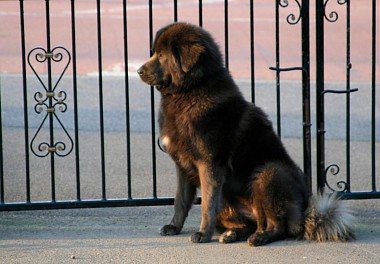
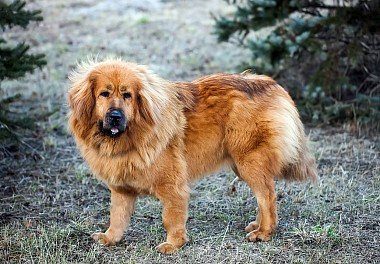
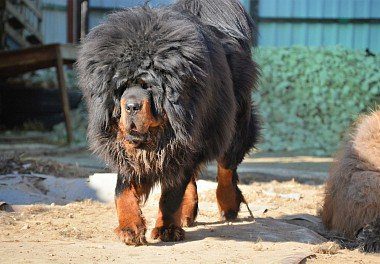
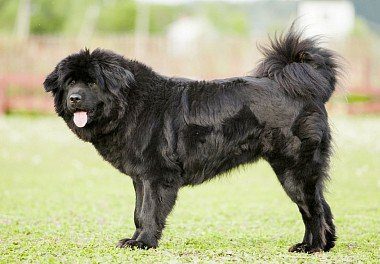
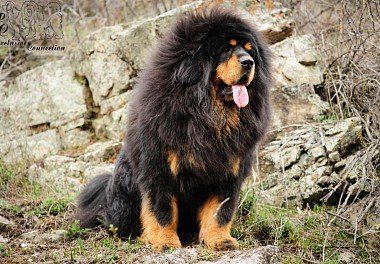
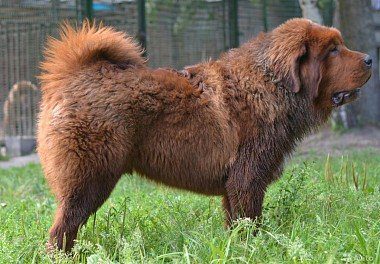

The nature of the Tibetan Mastiff
Self-confident, balanced and independent – these are the epithets that come to mind of a person who first meets a Tibetan Mastiff. The dog has an unshakable sense of self-worth and requires an appropriate attitude towards itself: not as a pet, but as an equal being. The Mastiff does not tend to show nervousness, cowardice or unreasonable aggression, as representatives of small breeds. This is a restrained and independent animal that behaves with royal dignity and never barks at trifles.
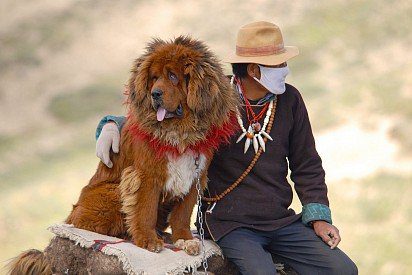
The thousand-year history of the existence of the breed and the original purpose of its representatives explain the fact that mastiffs have excellent instincts when it comes to protecting the territory entrusted to them. For the same reason, dogs tend to lead a nocturnal lifestyle, because their distant ancestors gained energy and strength during daytime sleep in order to start serving after dark. So don’t be surprised if your Tibetan suddenly becomes restless and noisy when you go to bed. In rare moments, the dog may bark, seeing a potential danger in a quiet rustle or creak. Consider this fact in the presence of overly irritable neighbors who will not miss the chance to express their indignation.
The attitude of the animal towards strangers is mostly restrained – especially in the presence of the owner. The Mastiff will never rush into the attack first in the absence of a threat, but be sure: not a single movement of an intruder will escape his gaze. Representatives of this breed have well-developed intuition, so the dog can come to terms with the society of far from every person. And this is a great reason to think about whether you really communicate with a friendly and pleasant company?
Speaking of friends… If you are a fairly sociable person and regularly invite guests for tea, the mastiff will not fully accept this fact and will make any attempts to limit the number of people in your house. Families with children should also pay attention to this fact. Excessively active and loud games of a child with his friends can be perceived by a Tibetan as a threat and a manifestation of aggression. Mastiff, without hesitation, will stand up for his little master, and taking into account the powerful dimensions of the dog and the impressive body weight, this can end in very deplorable circumstances.
Representatives of this breed show dominance in relation to other pets. The exception is pets with whom the Tibetan grew up: in this case, the dog considers them members of his pack. This applies equally to cats and other breeds of dogs. However, it is not recommended to have new animals if an adult mastiff already lives in your house. In this case, competition cannot be avoided.
In the family circle, Tibetans are friendly and love to spend time with the owner, so get ready to have a miniature version of Chewbacca from Star Wars lying at your feet every day and peacefully snoring in response to dog dreams. Adult mastiffs are calm, but puppies are full of strength and energy. If not properly nurtured, these plump cubs will turn your home into ruins in minutes, so don’t leave them unattended for long periods of time.
Watch out if your pet gets bored! Tibetan Mastiffs tend to gnaw on anything that is within their sight. If you value your furniture, make sure you have enough toys and don’t forget to walk your dog in the city park. Tibetans will run after the frisbee with puppyish delight, and after the game they will lie down with pleasure in the shade of sprawling trees. A winter walk is especially appreciated by representatives of this breed: when else will there be a chance to tumble in the snow, which is so reminiscent of the historical homeland of mastiffs – Tibet?
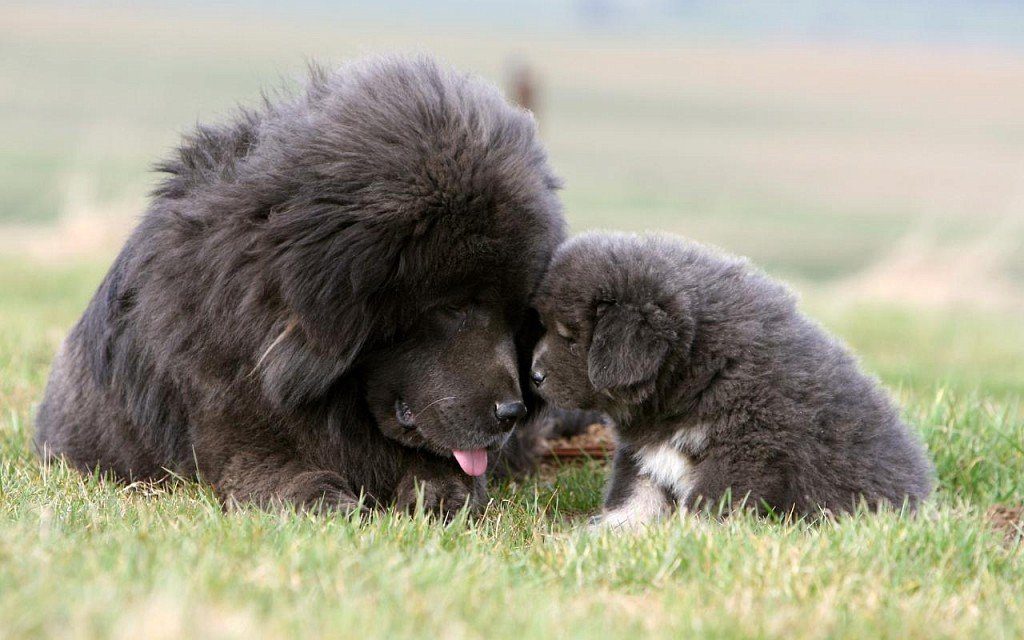
Education and training
In view of the independent and somewhat even stubborn nature, the Tibetan mastiff is difficult to train (especially if it does not recognize the primacy of the owner). Tact and patience are your main weapons in the process of raising an animal and teaching it new commands. Avoid rude words and actions, otherwise a real problem will grow out of the puppy, which will not be so easy to deal with.
It can take about two years to fully train a Tibetan mastiff. If you do not have enough time and experience, it is best to turn to specialists who will not only teach the dog the basic commands, but also share effective tips on raising this furry giant.
An important aspect is imprinting – a set of techniques aimed at accustoming an animal to unquestioningly trust its owner. Don’t forget to pet your puppy and show affection. You may even have to sacrifice your own clothes for this: the mastiff loves to “chew” a person, thereby expressing his affection and desire to start another fun game. If this does not happen, and the laces on your sneakers are still intact, think about it: the puppy simply does not trust you and will not become a devoted friend in the future.
For representatives of this breed, early and proper socialization is very important. Already from the seventh week, the mastiff should be among people and other animals and thereby get used to the fact that the whole world does not revolve around his person. For the same purpose, it is recommended to invite guests to your home so that the dog gradually gets used to strangers on its territory and does not show aggression towards strangers.
When walking, do not stick to one route. Firstly, your pet will quickly get bored and soon stop enjoying the walk. Secondly, the change of location will allow the mastiff to understand that he does not own the whole world, and thereby make the animal more tolerant of other creatures.

Care and maintenance
Huge size and long hair – that is why caring for the Tibetan Mastiff takes so much time and effort. The thick coat of the dog, which has a dense undercoat, deserves special attention. Despite the fact that mats rarely form in representatives of the breed, regular combing is still necessary. It is carried out no more than three times a week, using a metal brush. Before combing, it is recommended to sprinkle the coat with diluted conditioner or water: this will make the procedure a little easier.

If you still find tangles – they mainly appear on the ears, neck and hind legs of the animal – use a tangle cutter and a special spray to gently remove them. Please note that Tibetan mastiffs shed heavily in spring and autumn, so additional devices such as a furminator or a slicker can be used.
It is strictly forbidden to shorten the dog’s coat with a hair clipper! This is fraught with a violation of thermoregulation and, consequently, frequent inflammation of the lungs.
The Mastiff is not a breed that needs regular bathing. To maintain cleanliness, it is enough to arrange a bath day for the animal once every three months. In addition, frequent water procedures hypertrophy the skin glands of the dog, which is fraught with the appearance of a specific and well-known smell of “dog”. An excellent alternative to bathing can be dry shampoo, which is rubbed into the coat of the Tibetan Mastiff, and then carefully combed out.
To shorten the nails, use a nail cutter for large breeds of dogs, and to smooth out sharp edges, use a nail file. Soak your pet’s paws in warm water first to make the process easier. It is repeated once a month. At the same time, the hair between the fingers of the Tibetan mastiff is carefully cut off, and the paw pads are oiled. This will avoid the formation of cracks that cause significant discomfort to the dog.
The animal’s teeth should be brushed twice a week. Use a brush or a special nozzle on your finger and in no case “share” your paste with a Tibetan: there is a special one for this, for dogs. In addition to plaque, tartar can also form in the pet’s mouth, so you need to take care of the presence of special toys and solid food in the dog’s diet. Thanks to them, mastiff teeth will retain their strength for a long time.
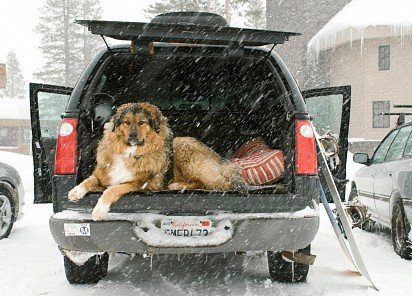
Tibetan ears also need your attention. To keep them clean, wipe your ears once a week with a damp handkerchief. In the winter season, do not go for a walk with the animal until its ears are completely dry. The same goes for the eyes. In this case, use a soft, lint-free cloth moistened with a decoction of chamomile.
The health of the Tibetan Mastiff is largely determined by a balanced diet. In the first months of a dog’s life, it is necessary to take care of a sufficient amount of calcium: the joints of such a massive giant are subject to heavy loads every minute. Otherwise, premium dry food or natural food remains the best way to feed a Tibetan. Please note that the combination of two types of food is fraught with problems with the dog’s digestive system.
Do not include the following foods in the diet of the Tibetan Mastiff:
- river fish (in any form);
- spicy and salty foods;
- tubular bones;
- flour products;
- fat meat;
- smoked meats;
- raw eggs;
- potato;
- sweets;
- nuts.
Natural food is always served fresh and not hot. The same applies to drinking water.
Health and disease of the Tibetan Mastiff
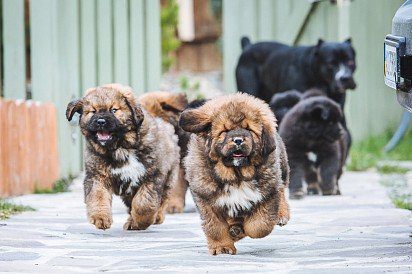
Natives of snow-covered Tibet are distinguished by excellent health. So, adult mastiffs practically do not get sick. However, there are diseases that are characteristic of all representatives of this breed:
- decreased thyroid function or disease;
- dysplasia of the elbow or hip joints;
- hypertrophic neuropathy;
- inflammation of tubular bones;
- ear infections;
- osteochondrosis.
Visit the veterinarian in time and do not forget that a vaccinated pet is a healthy pet.
How to choose a puppy
It is best to buy a Tibetan Mastiff in kennels that breed this breed. If pedigree is important to you, ask the breeder to provide all the information and photographs of adult individuals that will later give offspring. At the same time, you can book a puppy from a certain pair of mastiffs or take the baby you like four weeks after his birth.
Puppies should be kept in a spacious and carefully cleaned room, be playful and have a healthy curiosity. Carefully examine the skin and mucous membranes of the baby. Eyes and nose should be clean and free from painful discharge. Pustules and other kinds of irritation are also ideally absent. A small Tibetan should be moderately heavy and well-fed, broad-faced and thick-legged. The thicker the coat, the better. Please note that the puppy should not be cowardly and aggressive.
Listen to your heart – and it will not deceive you!
Photo of Tibetan mastiff puppies
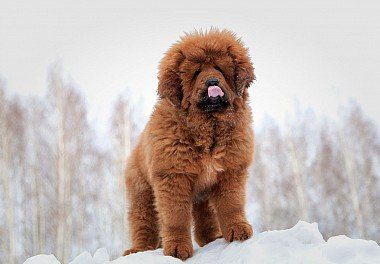
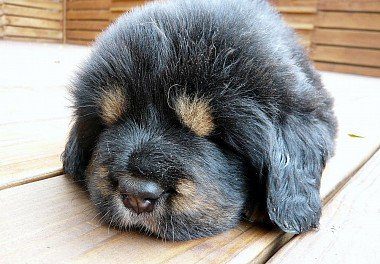
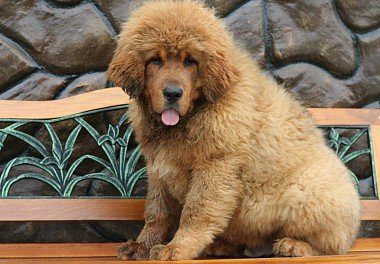
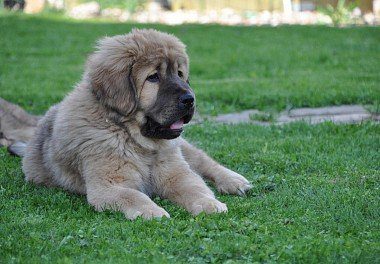
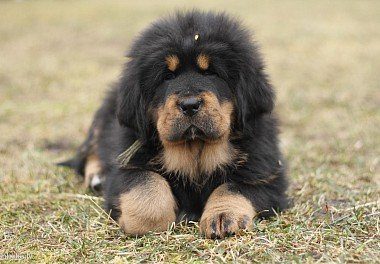
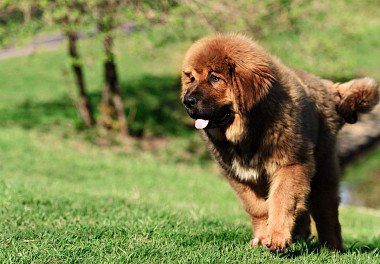
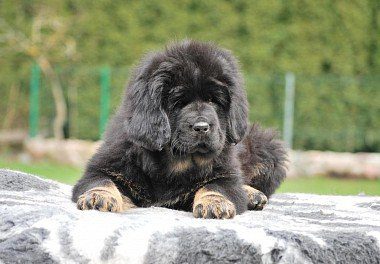
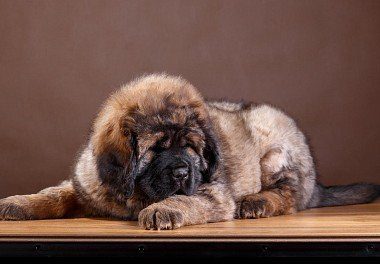
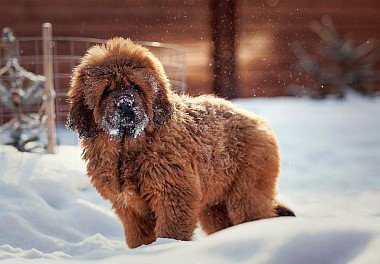
How much does a Tibetan Mastiff cost?
Tibetans to this day remain one of the rarest dog breeds, especially in Russia. For this reason, the price of a puppy can bite, as it starts from 900$ and more. Pedigree kids will cost 2500$. Don’t try to save money on a future friend by getting a mastiff from the bird market for next to nothing. This will backfire on you with frequent pet illnesses.



